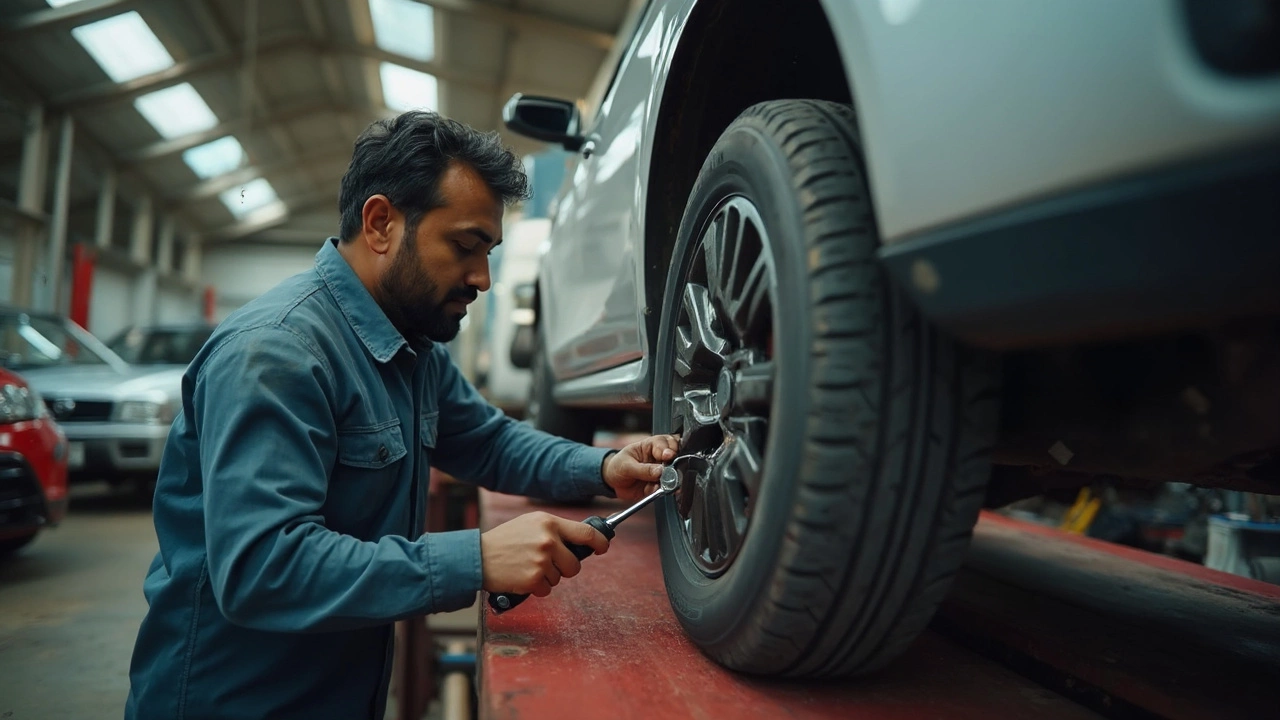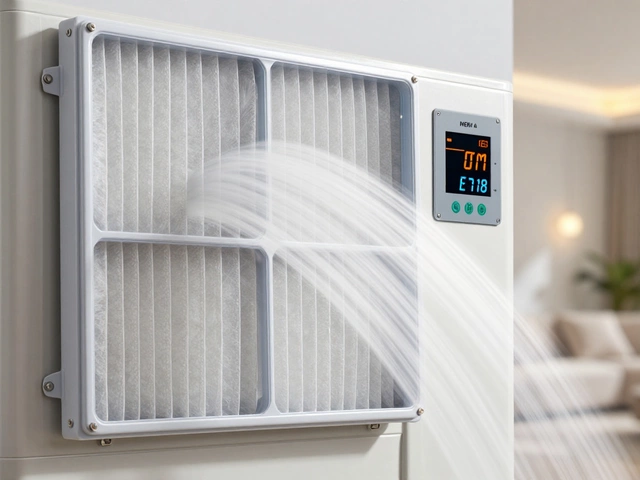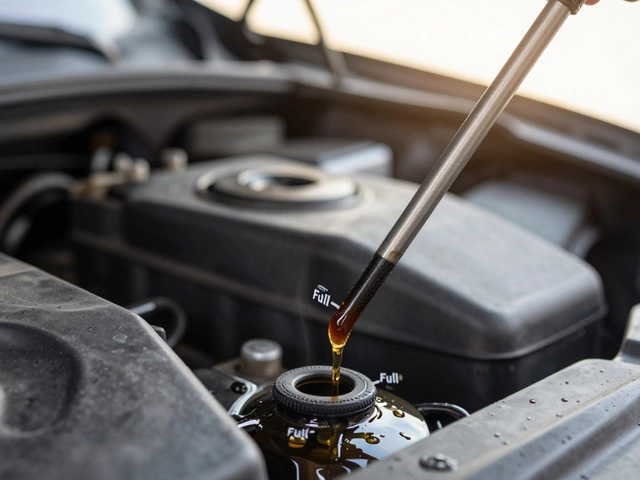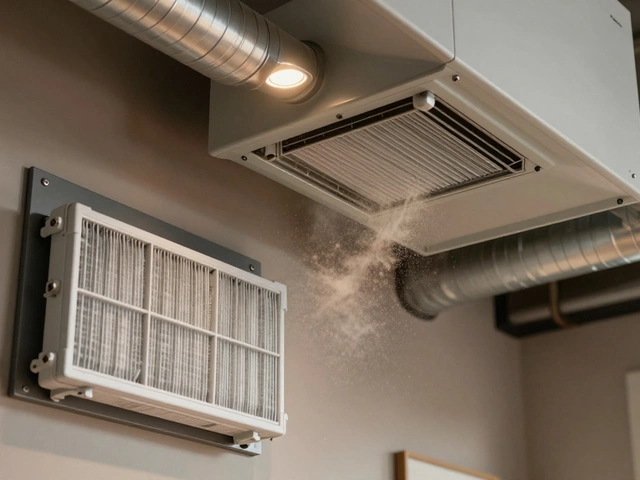
If your car feels like it's riding a jackhammer instead of smoothly rolling over the road, it's time to give your suspension some attention. The suspension system is critical to your car's comfort and handling. It connects the vehicle to its wheels and absorbs the shock from the road. Sure, a firm suspension can mean better performance, but sometimes you just want to glide over those potholes.
A softer suspension setup isn't just about luxury—it can be a real game-changer for anyone who travels on poorly maintained roads every day. Making a few tweaks here and there might seem complicated, but you don't always need to be a mechanic to figure this out. Let’s explore some practical steps and tricks to achieve that cushy ride you’ve been dreaming of.
- Understanding Suspension Basics
- Assessing Your Current Suspension
- Adjusting Tire Pressure for Comfort
- Upgrading Shock Absorbers
- Exploring Soft Springs Options
- Considering Whole Suspension Kits
Understanding Suspension Basics
Your car's suspension system is like the unsung hero of your vehicle, quietly working behind the scenes to make sure you have a safe and comfy ride. At its core, the suspension is all about controlling the dynamics between the car's chassis and wheels. It ensures that your tires remain in contact with the road, even when you're dealing with uneven surfaces.
Key Components of Suspension
First off, let's get to know the basic parts involved:
- Shock Absorbers: These dampen the impact of rough roads and limit bounce rate.
- Springs: They support the weight of the vehicle, absorb impacts, and keep ride height stable.
- Control Arms: These connect the wheels to the frame, ensuring alignment and steering stability.
- Sway Bars: Also known as anti-roll bars, these help reduce body roll during cornering.
How It All Works Together
The magic of the suspension lies in how these parts interact. When you hit a bump, the shock absorbers and springs compress to absorb kinetic energy. The control arms keep the wheels aligned, and the sway bars help maintain balance. This coordination ensures that when you come out of a pothole or over a speed bump, the vehicle returns smoothly to its original path. Engineers balance between stiffness for performance and softness for comfort, depending on what the car is intended for.
To keep things interesting, here's a handy comparison table of suspension setups commonly used in cars:
| Setup Type | Comfort Level | Common Features |
|---|---|---|
| MacPherson Strut | Moderate | Simple design, compact |
| Multi-link | High | Complex geometry, great flexibility |
| Double Wishbone | High | Stable, excellent control |
Understanding these basics gives you a solid foundation to start thinking about adjustments and improvements. The goal here is to tweak these components so that your suspension parts offer less jarring and more cushioning for a softer ride.
Assessing Your Current Suspension
Before diving into any modifications, it's crucial to understand what you're working with. Your car's suspension is made up of several parts including shocks, struts, springs, and control arms. These components work together to provide both comfort and control. But if the ride feels bumpy, assessing these parts is the first step.
Physical Inspection
Start by checking the visible parts for wear and tear. Cracks or leaks in the shock absorbers are a common issue. Look at the springs too; they should be taut and without rust. A quick visual inspection can often reveal a lot.
As Robert E. 'Bob' Smith, a renowned vehicle dynamics expert, puts it,
"The state of your suspension directly impacts your safety and comfort on the road. Regular checks can prevent long-term damage and costly replacements."
Performance Tests
Next, let's see how your car behaves on the road. Notice how it handles over bumps. Does it bounce excessively? That might mean your shock absorbers need attention. And if it leans dramatically during turns, that's a sign that the springs are too soft.
Seek Professional Diagnosis
If you're not confident in your assessment, consider visiting a professional mechanic. They can perform detailed diagnostics and suggest the best course of action. It's worth noting that sometimes what feels like a suspension issue might be related to tire pressure or alignment. A trained eye can figure this out quickly.
Using Tech
Modern technology comes to the rescue with diagnostic tools that can plug into your car’s system and report abnormalities. Some garages offer this as part of their service. Having these readings can offer hard data about what's going on.
Understanding these basics gives you a clearer idea on whether your suspension parts need a simple tune-up or a full replacement. Once you know what needs fixing, everything else falls into place much easier.
Adjusting Tire Pressure for Comfort
Tire pressure might not be the first thing you think about when it comes to making your ride smoother, but it plays a huge role. The tires are your car's first line of defense against the harshness of the road, and tweaking the pressure can actually enhance your car's suspension performance.
First off, check the recommended tire pressure for your vehicle, usually found in the driver's manual or on a sticker inside the driver's door. This number is optimized for balance between comfort, fuel economy, and tire life. But if comfort's your main goal here, you might want to experiment a bit.
How to Adjust Tire Pressure
- Get a good tire gauge: First things first, invest in a reliable tire pressure gauge if you don't already have one. The cheap ones can be inaccurate, and what good is adjusting pressure if it's based on bad data?
- Reduce a few PSI: Try reducing the pressure by 2-3 PSI than the recommended amount. Dropping the pressure slightly can allow the tire to absorb more road bumps effectively. Make sure each tire is evenly reduced to maintain good handling characteristics.
- Test drive and feel: After adjusting, take your vehicle for a spin around the block. Pay attention to how the car feels during normal driving conditions. If it feels better, you're on the right track; if it's too soft or jelly-like, you've gone too far.
- Check for even wear: Lower tire pressure could potentially cause uneven wear over time. Keep an eye on your tires for signs of excessive edge wear which could signal lower tire life.
Remember, there's a sweet spot between too soft and just right, and it might take a few tries to get it perfect. This minor adjustment doesn't require any special skills, just a bit of patience. Plus, if you mess up, it's one of the easiest things to fix.

Upgrading Shock Absorbers
So, you're thinking about upgrading your car's suspension by focusing on shock absorbers? Smart move! Shock absorbers are pivotal in smoothing out the ride and improving overall comfort. They work by controlling the impact and rebound of your car's springs and suspension. If the suspension is your car's spine, think of shock absorbers as its joints, keeping everything flexible and responsive.
When looking to upgrade, the type of shock absorber you choose can make a huge difference. For a softer ride, you'll want to consider investing in high-quality, hydraulically dampened or gas-charged shock absorbers. These types are known for better handling irregularities on the road, thus enhancing comfort significantly.
Types of Shock Absorbers
- Hydraulic Shock Absorbers: These employ a simple fluid mechanism to absorb the road's energy. They're pretty reliable and great for typical driving conditions.
- Gas-Charged Shock Absorbers: A step up from hydraulic, they’re partially filled with nitrogen gas to provide better control and a smoother experience, especially on rough roads.
Wondering whether you should tackle the upgrade yourself or get professional help? If you've got the tools and feel confident, by all means, go ahead. For most folks, though, getting a pro involved might make more sense, mainly to ensure everything's aligned and optimum comfort is achieved.
Steps to Upgrade Shock Absorbers
- Research: Start by finding out which shock absorbers suit your car model and needs. Reviews and expert opinions can be super helpful.
- Gather Your Tools: If doing it yourself, ensure you have the right tools—jack stand, wrench set, and of course, your new shock absorbers.
- Installation: Once prepped, replace the old ones with the new and give everything a good check before heading out.
Ultimately, upgrading your shock absorbers can seem a bit daunting, but the payoff is a noticeably softer, more luxurious ride. Whether you do it yourself or seek a professional's hand, this change can redefine your entire driving experience, making every road trip something to look forward to.
Exploring Soft Springs Options
When it comes to making your car's suspension softer, one of the most effective ways is to look into the type of springs you’re using. Springs are a hard-working component of the suspension system because they support the weight of your vehicle. The type you choose can have a huge impact on your ride comfort.
Stock vs. Aftermarket Springs
Many cars come with stock springs that are designed for a balance of comfort and handling. If you're after a smoother feel, considering soft suspension or aftermarket springs might be the way to go. These springs are specifically designed to compress more easily over small bumps, offering a softer ride.
Different Types of Springs
There are several types of springs to choose from. Here are the most common:
- Linear Springs: These have a consistent spring rate and offer a more predictable handling experience, making them a popular choice for those seeking a balance between performance and comfort.
- Progressive Springs: These change their spring rate throughout the compression process, becoming stiffer as they compress. They offer a soft initial ride, getting progressively firmer to handle larger impacts.
- Air Springs: Adjustable in terms of height and softness, these can be a more expensive option but allow for a customizable ride comfort tailored to your driving needs.
Upgrading to softer springs may involve a trade-off with performance, as softer springs may lead to more body roll and less precise steering. However, if comfort is your goal, this trade-off may be worthwhile.
When shopping for car suspension parts, don't just grab whatever's cheapest. Quality springs from reputable brands will ensure they don't wear out too quickly, maintaining your comfort over time.
Here's a quick look at some popular spring types currently favored in the market:
| Spring Type | Characteristic | Best Used For |
|---|---|---|
| Linear Spring | Consistent rate | General purpose |
| Progressive Spring | Variable rate | Comfort & handling |
| Air Spring | Adjustable rate | Customizable comfort |
Ultimately, it's all about finding the right balance for you. Test different options to see what fits your desired driving experience. No need to settle for a bumpy ride when a few changes can make every trip feel like you're cruising on clouds.
Considering Whole Suspension Kits
So, you're thinking of investing in a whole suspension kit to make your car's ride softer? It's like giving your car a full-on spa treatment. While individual part tweaks can help, sometimes going all-in with a complete kit is the best deal for a dramatic improvement in comfort and handling.
Why Choose a Whole Kit?
A complete suspension kit replaces everything from the shock absorbers to the springs and even sway bars. This means everything works in harmony, which is crucial for a softer ride. Kits are designed to improve your ride's comfort without sacrificing its road-hugging capabilities.
Types of Suspension Kits
Not all kits are created equal. Here are some popular options:
- Coilover Kits: While they are often favored for sportiness, some offer adjustability for comfort.
- Leaf Spring Kits: Common in trucks, softer leaf springs can enhance the ride quality.
- Air Suspension Kits: Known for their ultimate comfort, they allow you to adjust the ride height and firmness, making them perfect for varied driving conditions.
What to Consider Before Buying
Before diving into a purchase, think about these factors:
- Budget: Suspension kits can range from a few hundred to several thousand pounds. Know your budget before you start shopping.
- Compatibility: Ensure the kit fits your car model and year. Check compatibility guides or consult with a vendor.
- Installation: Some kits can be a DIY project, but others may require professional help. Consider installation costs too.
Here's a quick comparison of types based on comfort and cost:
| Type | Comfort Level | Average Cost (£) |
|---|---|---|
| Coilover | Moderate | 500-1000 |
| Leaf Spring | Good | 300-700 |
| Air Suspension | Excellent | 1000-3000 |
At the end of the day, investing in a whole suspension kit is a smart move if you're looking for a consistent and long-term solution to soften your ride. Just remember to weigh your options, compare what's available, and always prioritize compatibility and quality over a quick fix.




